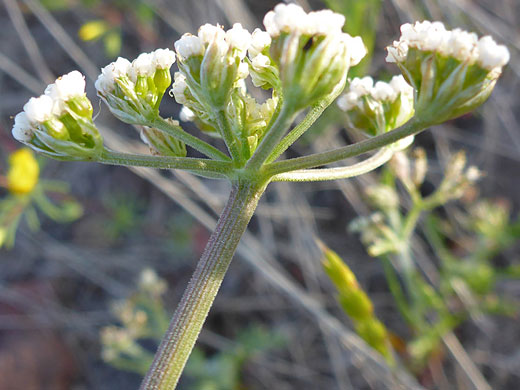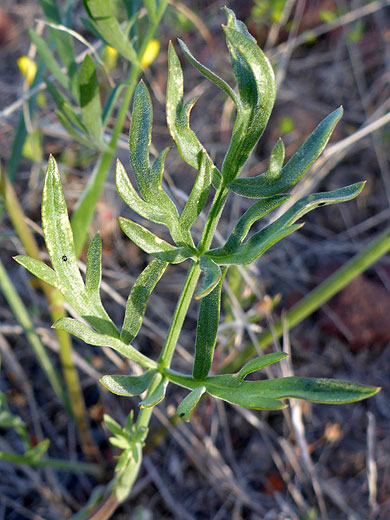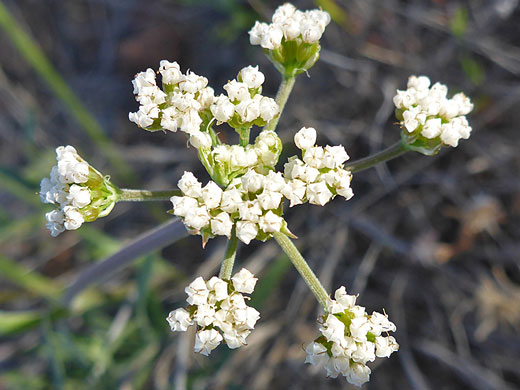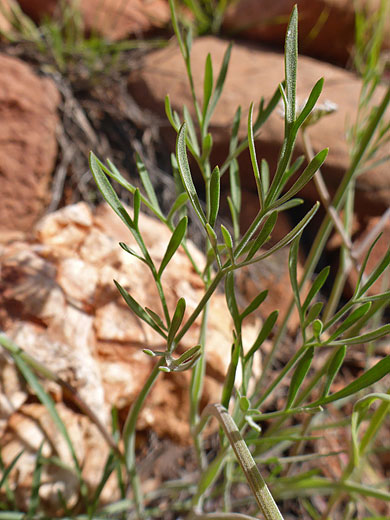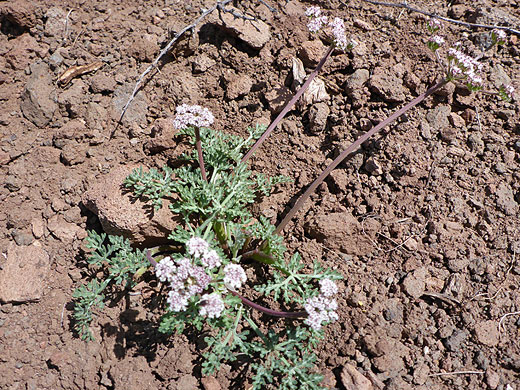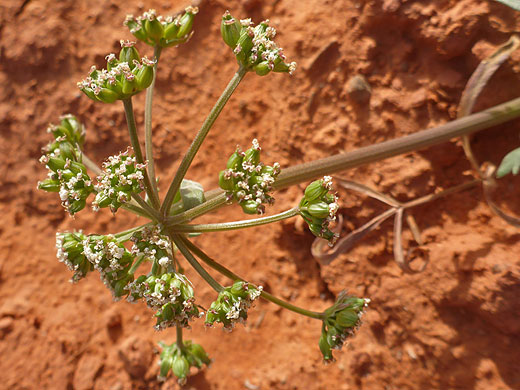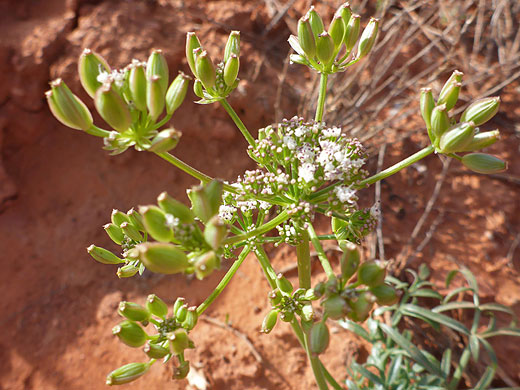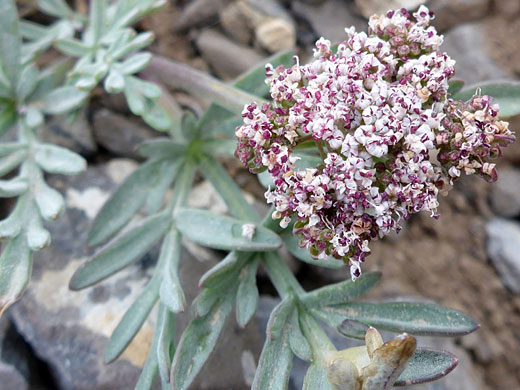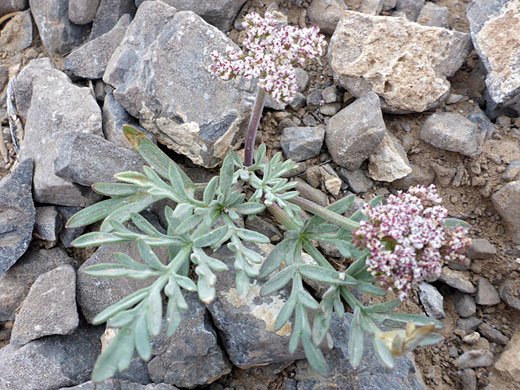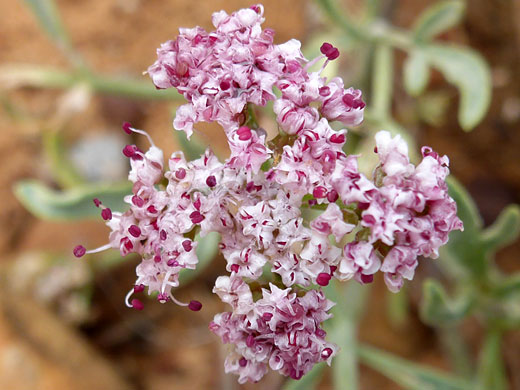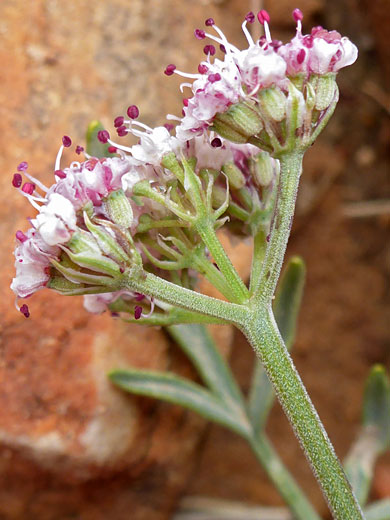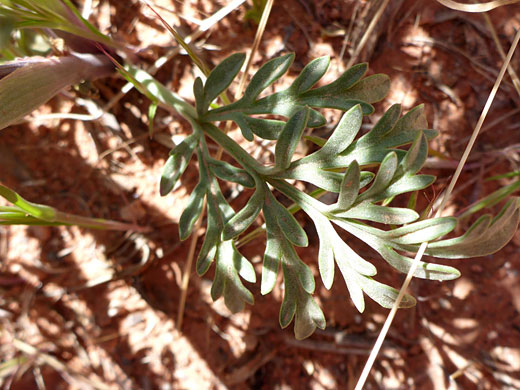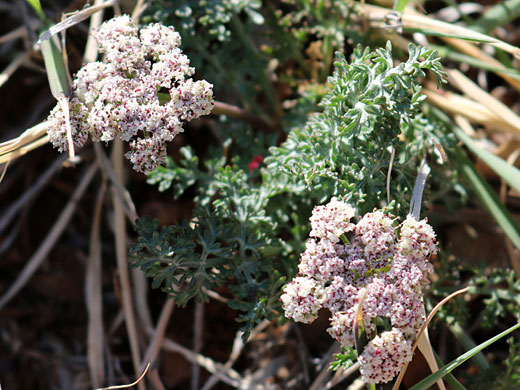Common name:
Nevada biscuitroot
Family:
Scientific name:
Lomatium nevadense
Main flower color:
Range:
The Great Basin states, east into New Mexico
Height:
Up to 18 inches
Habitat:
Dry hillsides, sagebrush, scrubland; 3,200 to 6,400 feet
Leaves:
Pinnately dissected, 2 or 3 times, into pointed, linear segments; mostly basal
Season:
April to July
Stems and leaves of lomatium nevadense are greyish-green in color, usually covered by very short, fine hairs. Leaves grow on stalks around 2 inches in length; the blade is about twice as long, divided into short, narrow segments, quite variable in size and spacing. Leaves are generally found only at the base of the stem, typically numbering 3 or 4. Stems have lengthwise grooves. The leafless, purplish flower stalks are longer than the leaves, growing upwards or at an angle.
The inflorescence is also finely hairy; a flat-topped cluster of between 8 and 22 rays, about one inch long, each terminating in a group of one to several dozen small white or pale cream flowers, subtended by pointed, green bractlets. Five stamens protrude from the flower centers, topped by red anthers.
Two varieties are var nevadense, for which the green, oblong fruit is covered by fine hairs, and var parishii where the fruit is essentially hairless.
The inflorescence is also finely hairy; a flat-topped cluster of between 8 and 22 rays, about one inch long, each terminating in a group of one to several dozen small white or pale cream flowers, subtended by pointed, green bractlets. Five stamens protrude from the flower centers, topped by red anthers.
Two varieties are var nevadense, for which the green, oblong fruit is covered by fine hairs, and var parishii where the fruit is essentially hairless.
All Contents © Copyright The American Southwest | Comments and Questions | Contribute | Site Map


